RIP Jesse
Wednesday, 30 April 2008

Thanks for letting us borrow your canoe that one time, when we saw the eagle* snatch the fish out of the Deschutes.
Once again, the Reaper came too soon….
* Or maybe it was an osprey…
Wednesday, 30 April 2008

Thanks for letting us borrow your canoe that one time, when we saw the eagle* snatch the fish out of the Deschutes.
Once again, the Reaper came too soon….
* Or maybe it was an osprey…
Wednesday, 30 April 2008
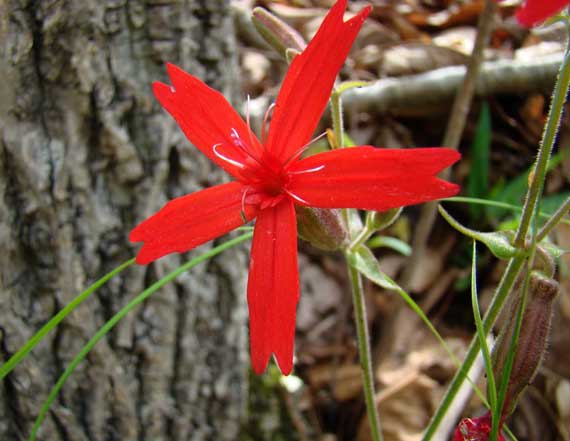
Fire pink (Silene virginica), with its lovely forked petals. Peterson says these wildflowers begin blooming in April, and that’s true down here, but not in more northern climes, I’m sure.
I often think about production intensification when I contemplate issues surrounding sociopolitical evolution. More people only happens if there are more resources; of course, in the long run those additional people can garner most of what they need on their own, but in every cross-cultural case, it seems like there’s an additional amount of “stuff”/“product” needed in the long run, so it’s not a linear relationship.
In world news right now, we hear about food shortages, rising fuel costs, and now fertilizer deficits. Another way to put all this is that demand is outstripping supply, which is directly related to increased and increasing human populations.
Global climate changes are altering the production/risk profile, thus exacerbating shortages.
The short-cut way to decrease shortages is to intensify production (increase efficiency, some would say). So now, we’ve pretty much done all the practical intensification to the global political economy, and voila!, if any part of the system falters, oops, problems! People are hungry! They become restless! The status quo is threatened!
What next? This is the stuff of history….
Tuesday, 29 April 2008
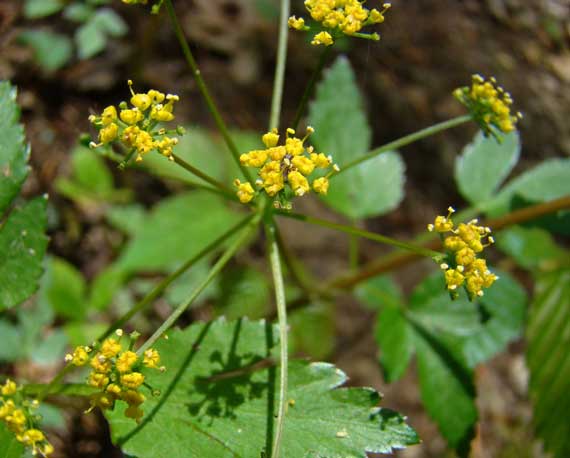
Wild parsnip (Pastinaca sativa)?
Recent rains have whacked the pollen count, and now we’re getting a cold snap. Where’re my socks?
greenhouse gas emissions
And some solid figures from Circle of Responsibility:
Researchers estimate that the average American diet produces more than 15 pounds of CO2 per day which equals 5,600 pounds of CO2 emissions per person per year…. Compare that number to other “practical changes” suggested by respected environmental organizations that ask individuals to cut their carbon by taking shorter hot showers or changing light bulbs. A 10-minute shower is often cited as contributing four pounds of carbon per day (or 1,460 pounds of CO2 per year); this is only about one-third the impact of our daily food choices! [text from here…]
Monday, 28 April 2008

Crested dwarf iris (Iris cristata), if I don’t miss my guess, from our walk on the 20th. Someone (surprisingly, not me) found the wildflower ID book (thanks, luv)….
There are all kinds of words and phrases I know something about, but not much. Or, it turns out, not much at all.
Today, I learned that bunker fuel, which I knew as the stuff that fuels the Great Lakes tankers, has the consistency of yogurt. Ick.
And who knew that shipping produces twice the carbon dioxide emissions as aviation? I can’t tell if that includes military aviation; but, still!
Sunday, 27 April 2008
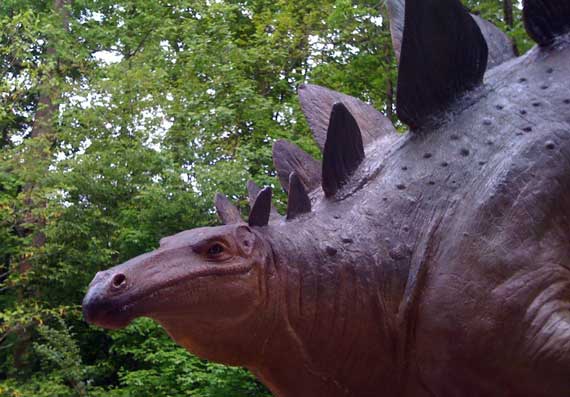
Did I mention they’re big on dinosaurs at Fernbank?
Rainy off and on today. Which is good for plants and reservoirs (Lanier’s still almost 14 feet low and we’re still under exceptional drought conditions).
And will wash away some of the accumulated pollen.
Saturday, 26 April 2008
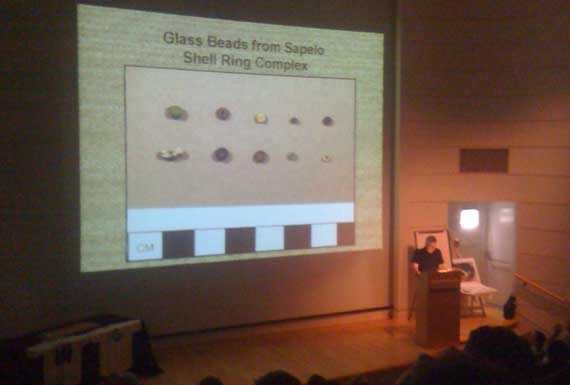
What we do for love: stay inside, in a windowless room, mostly with the lights off. On a nice day. On a nice Saturday!
Yes, but I found many, many people to talk to at the semi-annual SGA meeting, held this spring at Fernbank Museum of Natural History. One of Fernbank’s galleries is called “A Walk Through Time in Georgia.” For this particular visit, presentations focused on the Spanish period in Georgia, in the 1500s and 1600s, and mostly from the coast.
You may be surprised to learn that one of the hallmark artifacts from this period is the glass bead, used in rosaries and necklaces and the like. One site’s glass beads came from as far away as India and China, as well as, I think, Holland and Bavaria (might have those last two a bit wrong, but from what is now across Europe). Now that’s political economy!
Friday, 25 April 2008
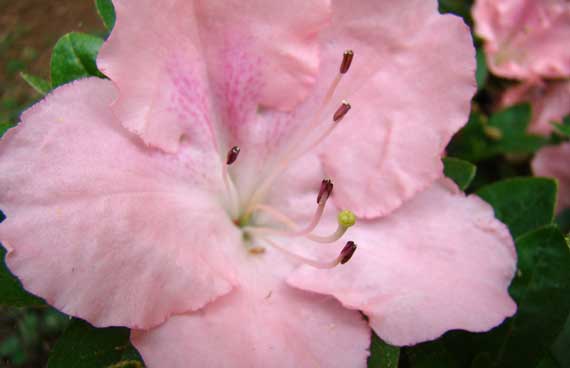
Ooops. I almost forgot about these pink azaleas down near the sidewalk!
Thursday, 24 April 2008
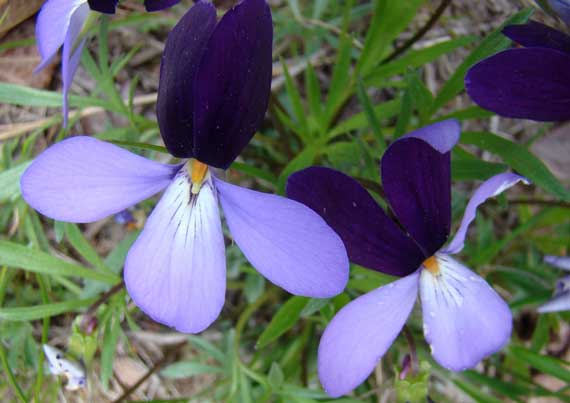
We saw many clumps of these flowers with all petals in the lighter color. We saw maybe four clumps with bicolor blooms. I thought they were viola/violets, but the leaves are wrong, and I can’t find my wildflower book to figure out what it is. Ah, another mystery!
Wednesday, 23 April 2008

Tada! In honor of the most excellent color/layout now dazzling your eyes!
Yes, we’ve got a new look here at Archaeofacts musings! Courtesy JCB, of course! Love it! Especially all those subtle graduations….
And that super-fast KayakWoman* already noticed before I could get this entry posted!
* Probably ’cause she’s frequently online and uses RSS feeds….
Wednesday, 23 April 2008

I’m perplexed by this. I’ve never seen anything like it. Have you?
Around the base of this modest-sized tree, and no other in the whole area, all the loose detritus is gone. The clear area extends a bit over a meter away from the trunk, and has no holes or dents or evidence that a heavy weight sat on the cleared area. The edge is even but not overly defined.
This special tree base is near a little-used but still public hiking trail. The spot is unremarkable, and nowhere near a hilltop or other prominence.
I’m thinking human not natural, without a doubt. But I can’t figure out why or what for….
Perhaps to mystify me and other hikers?